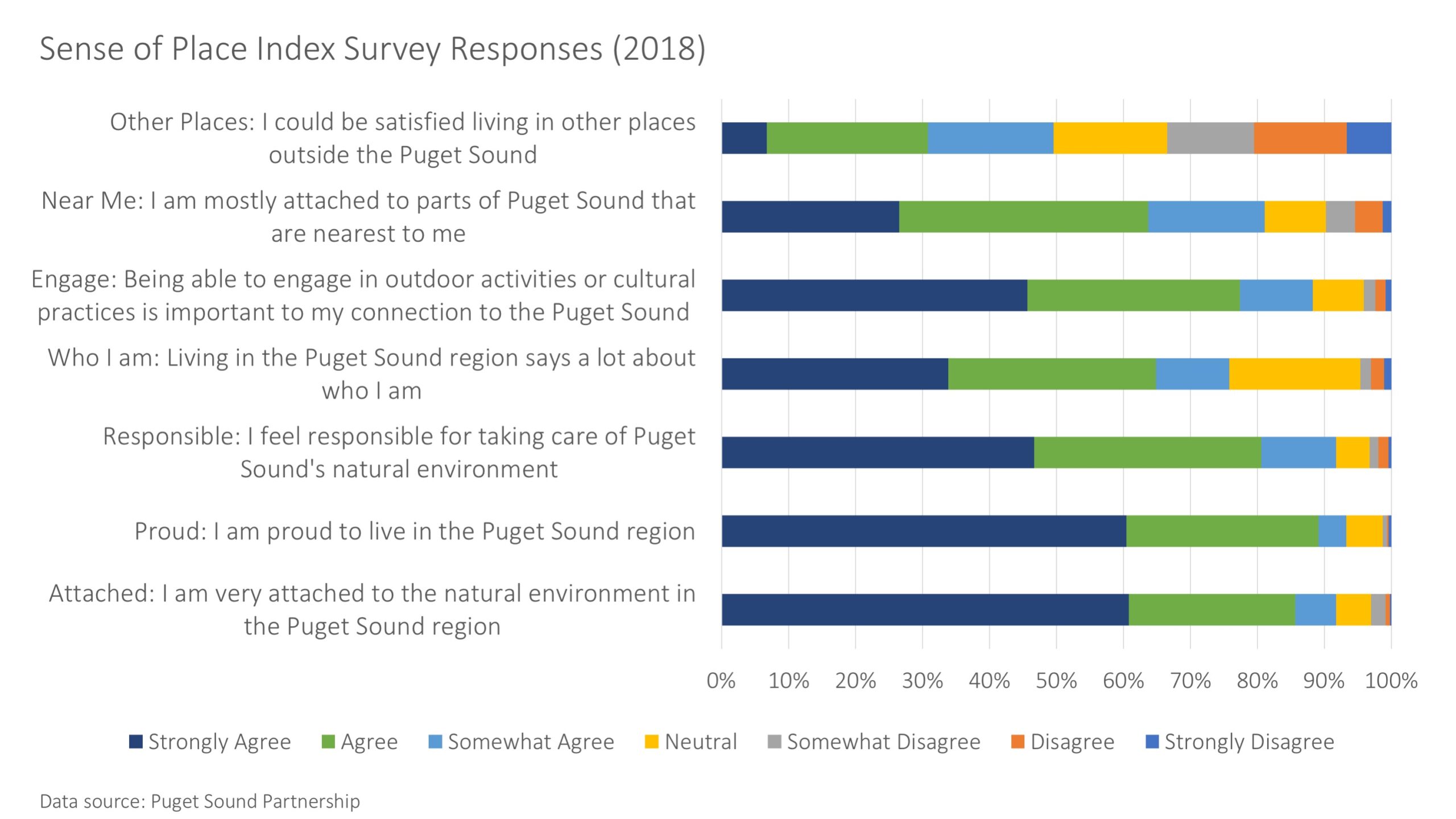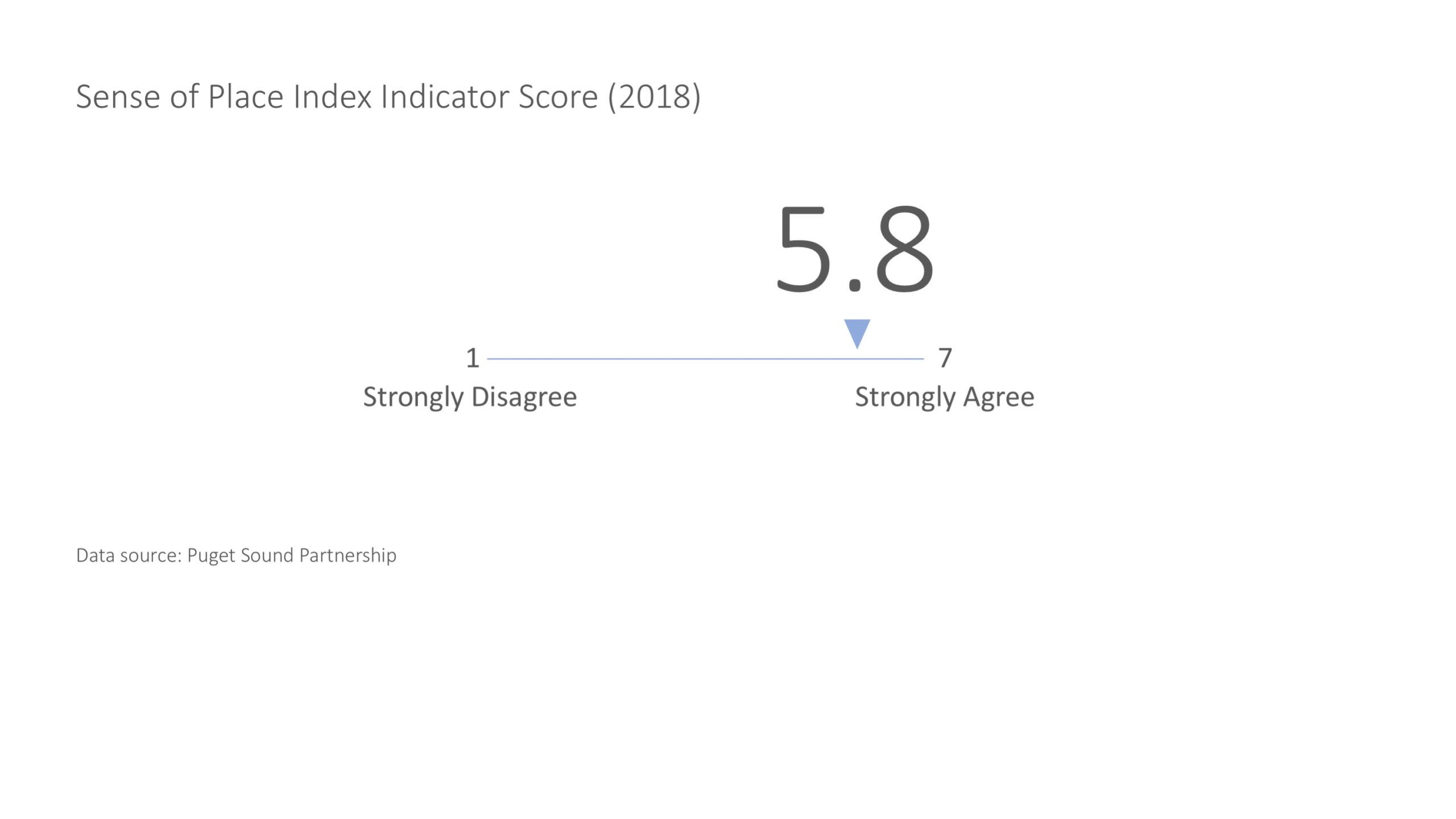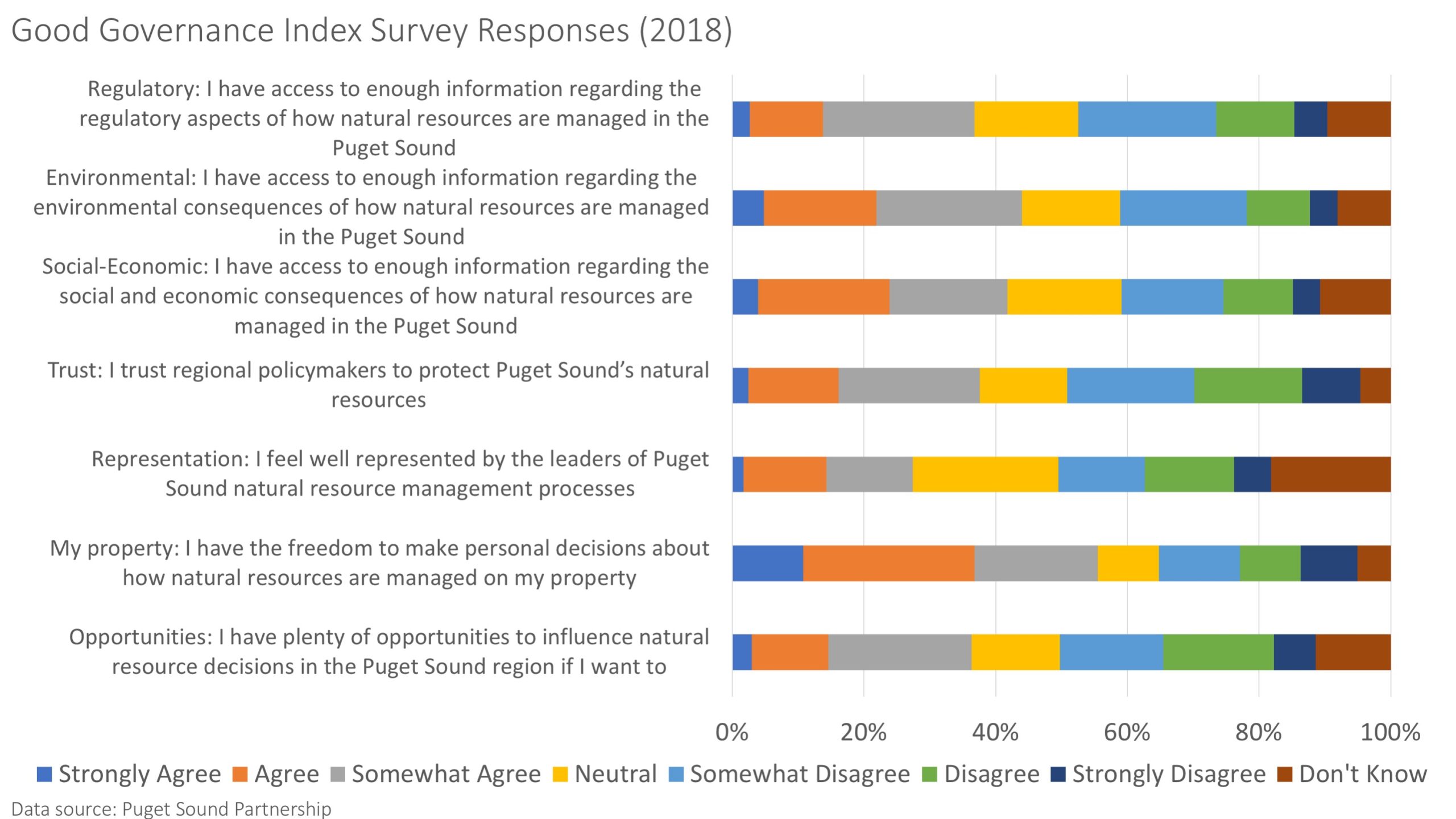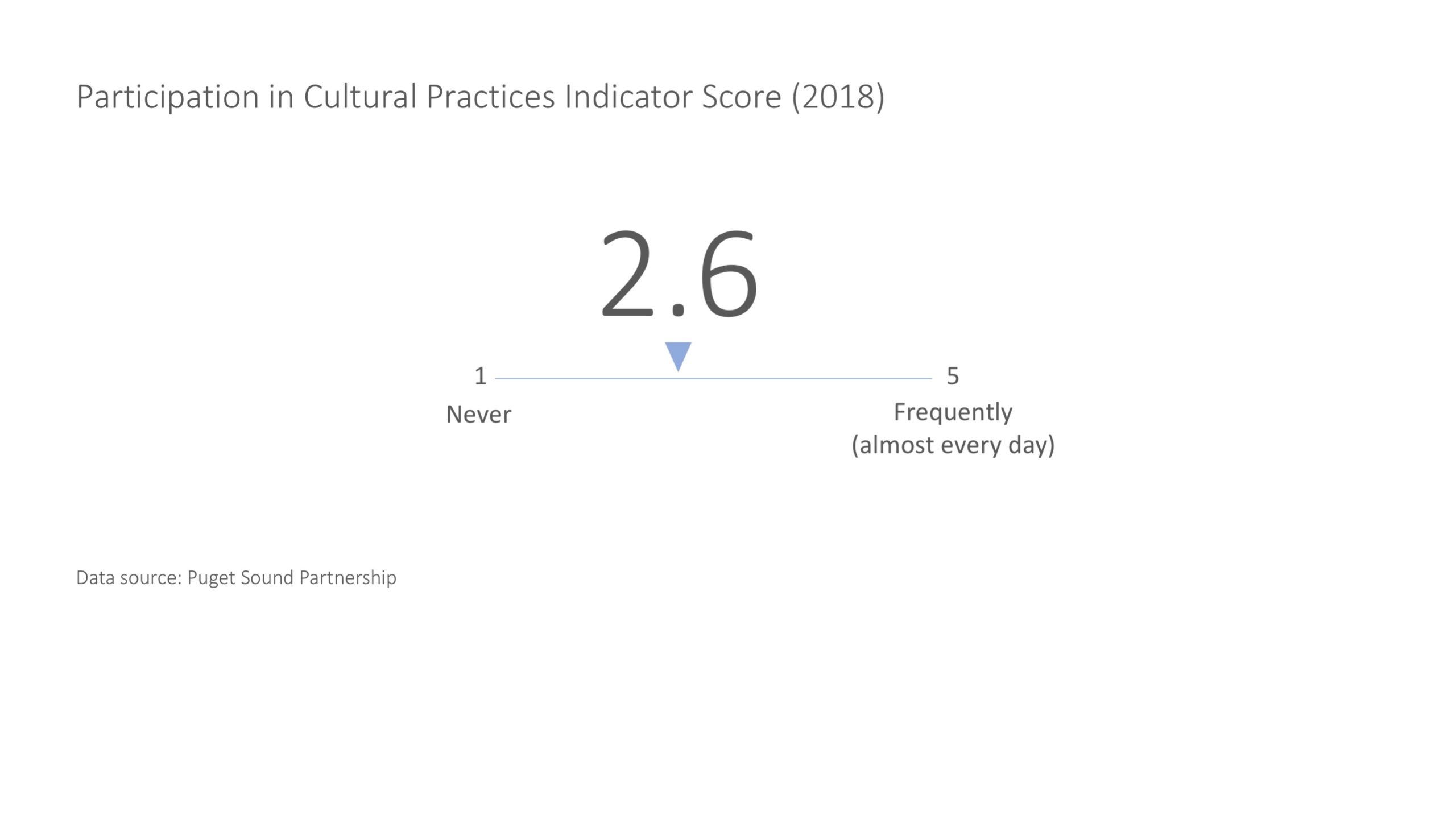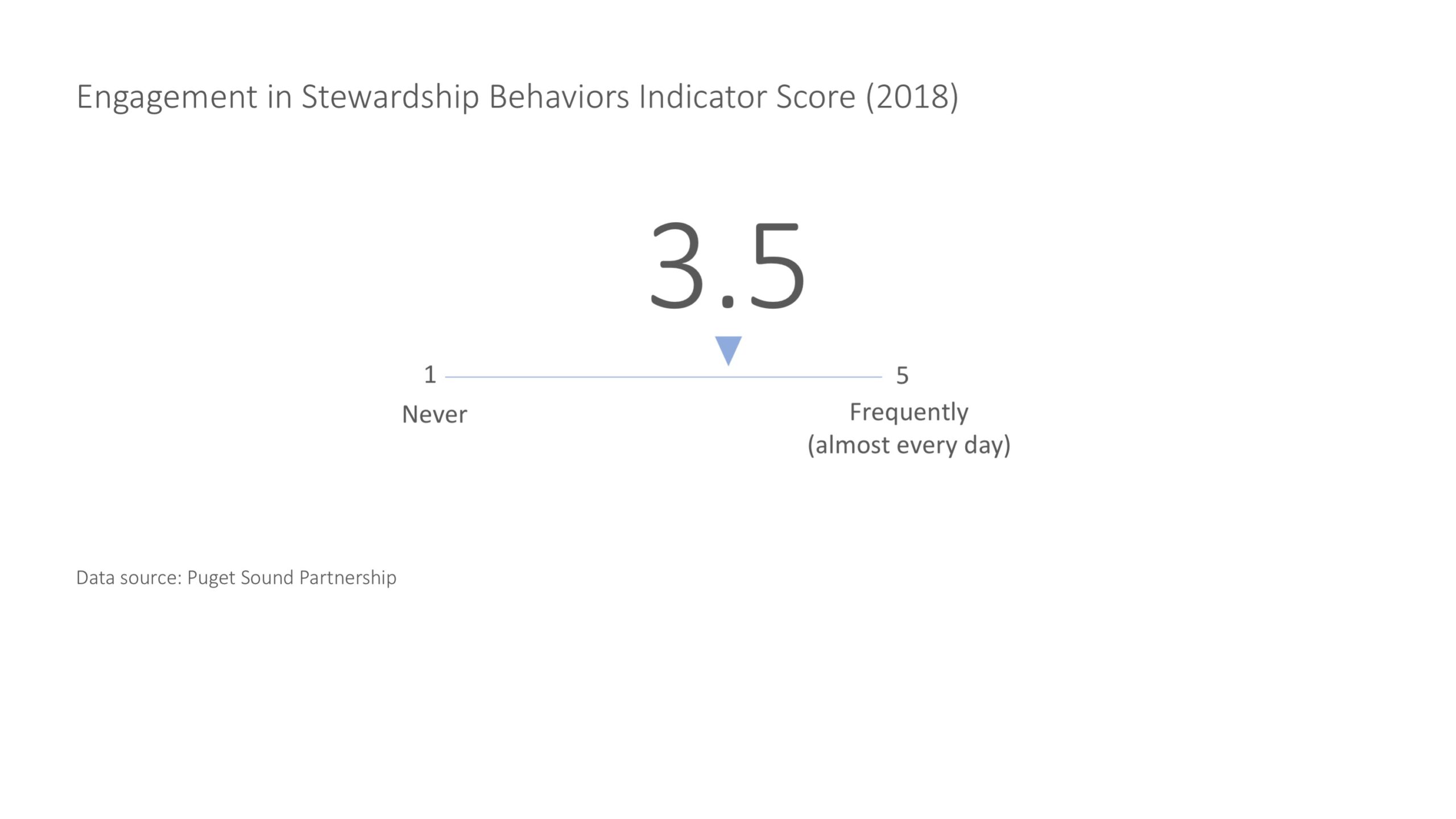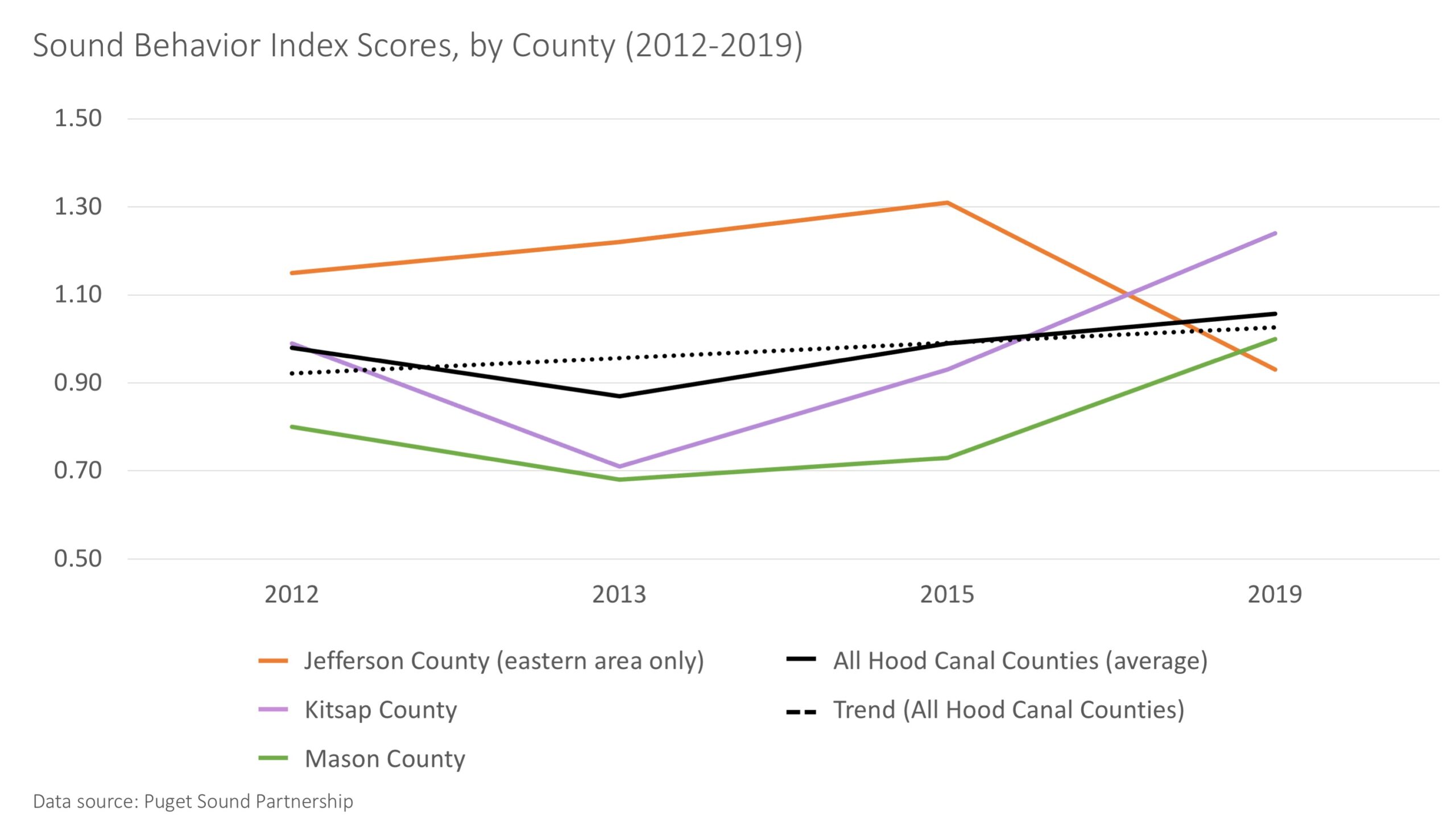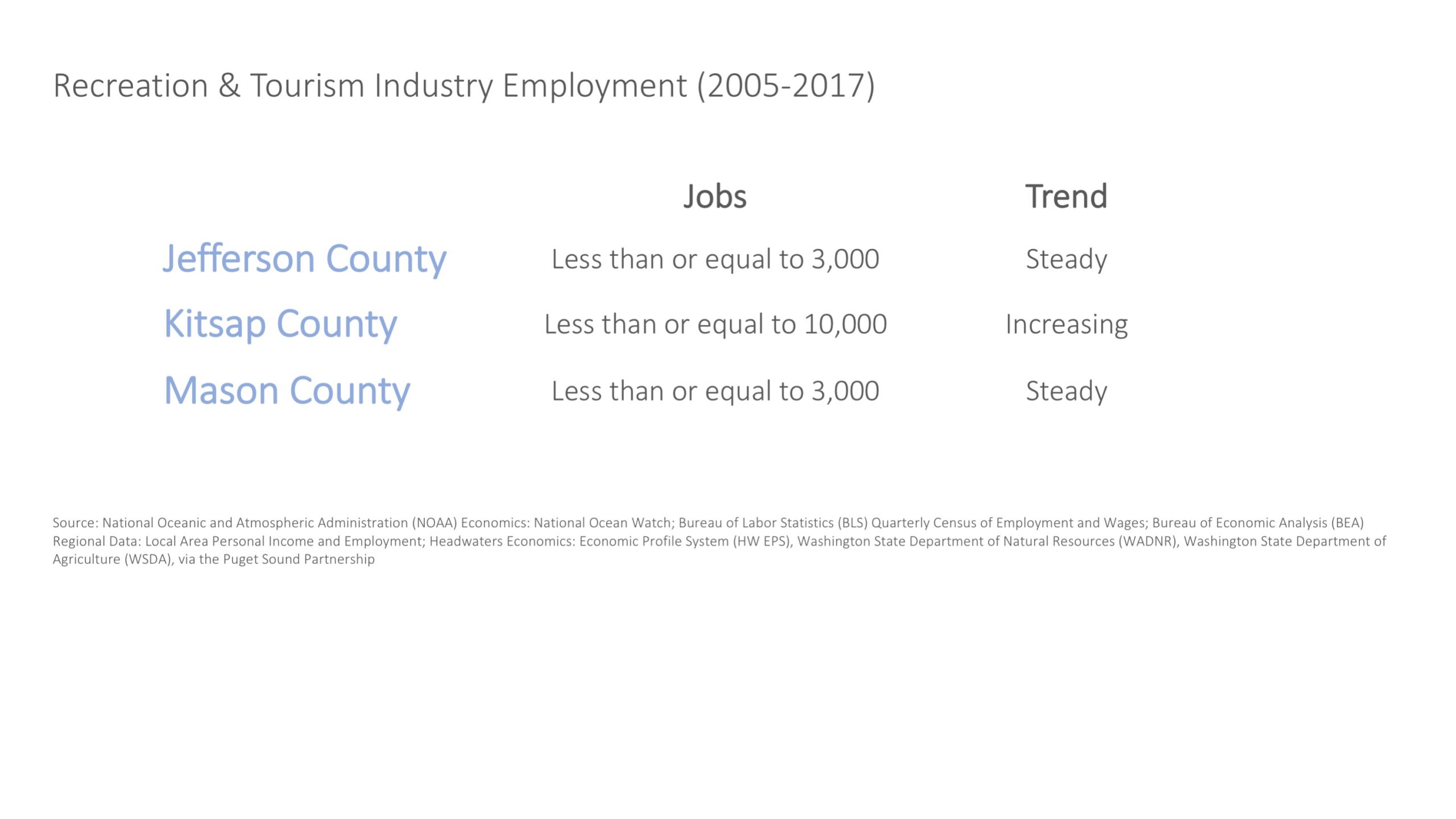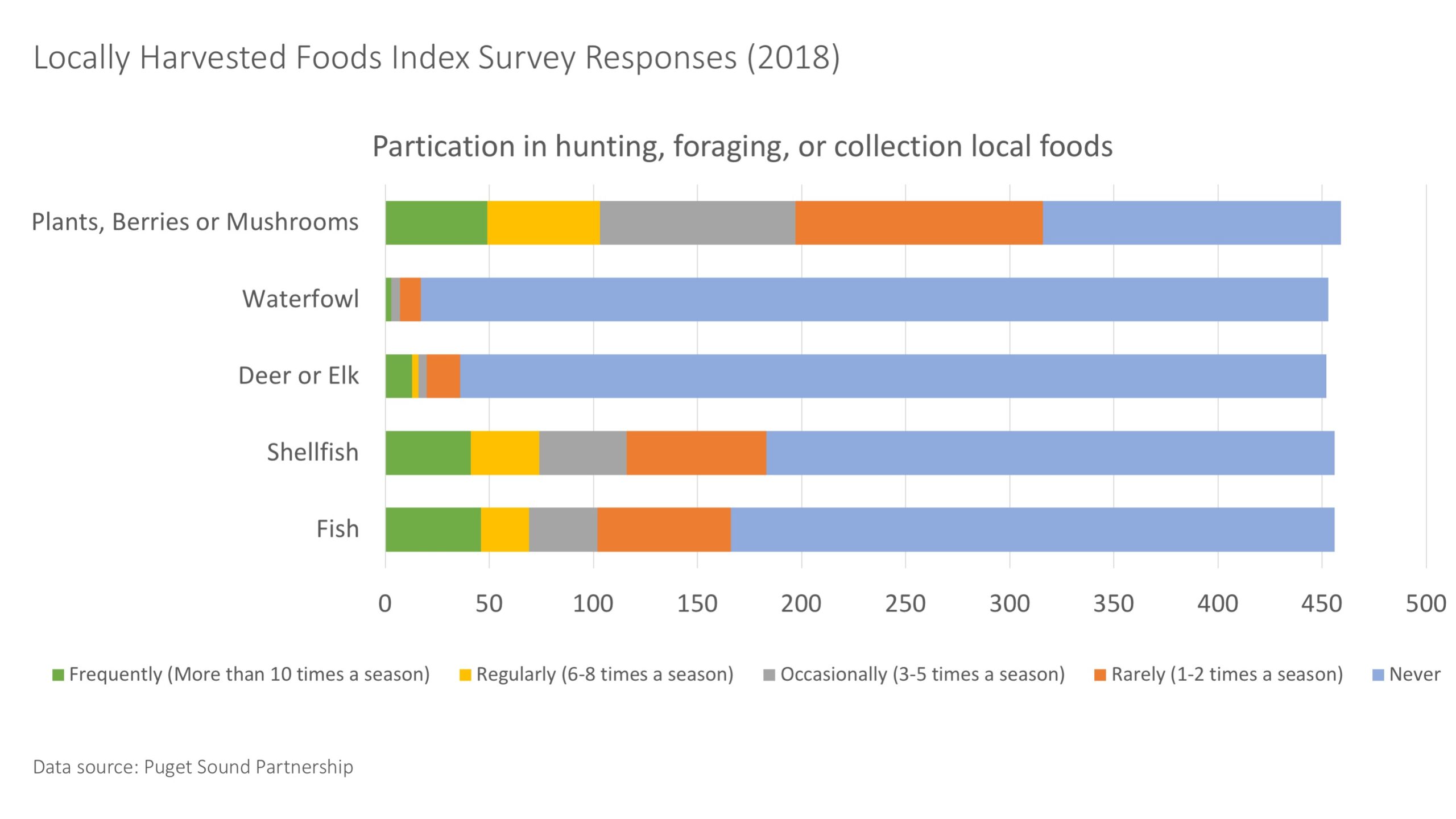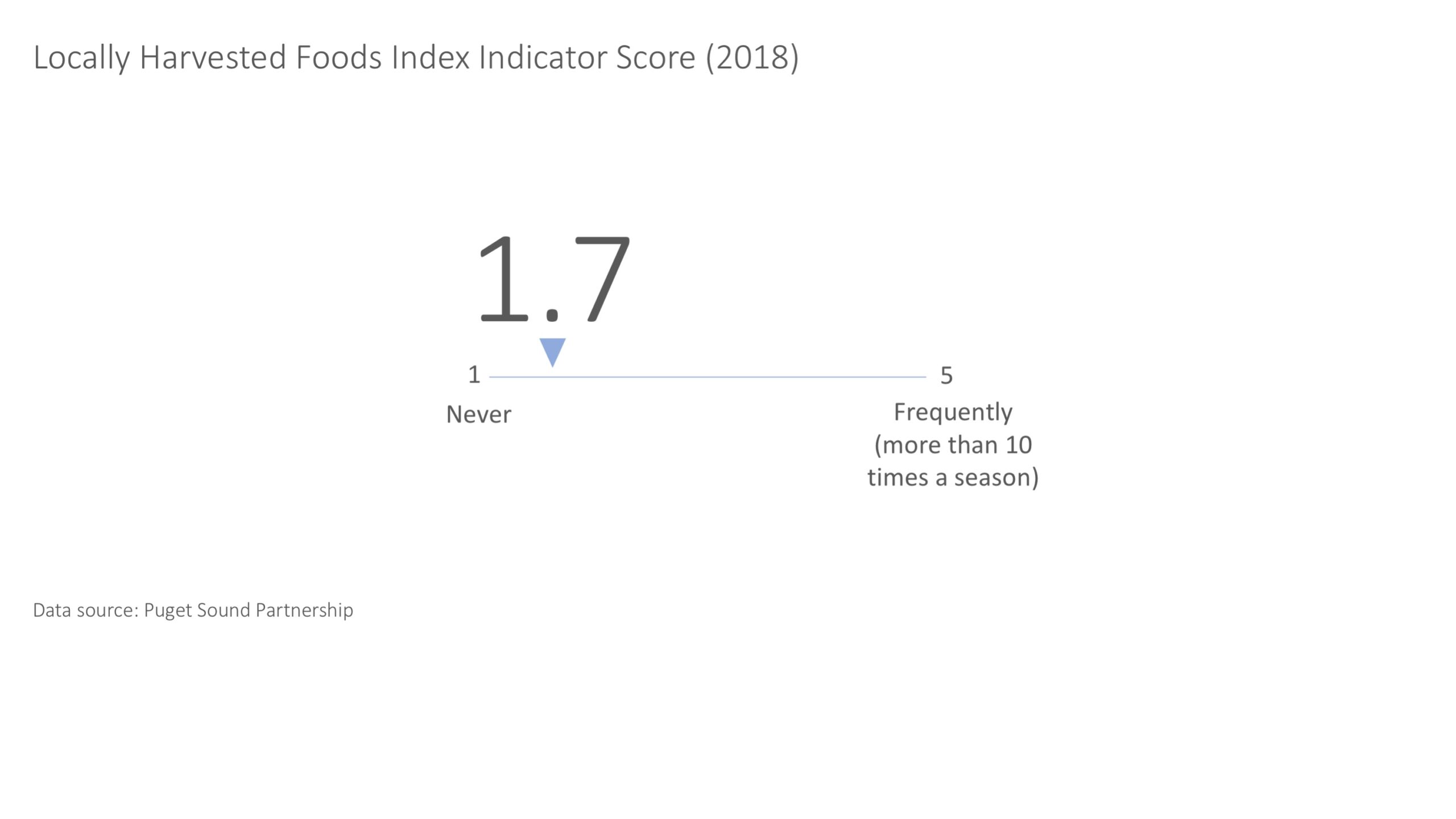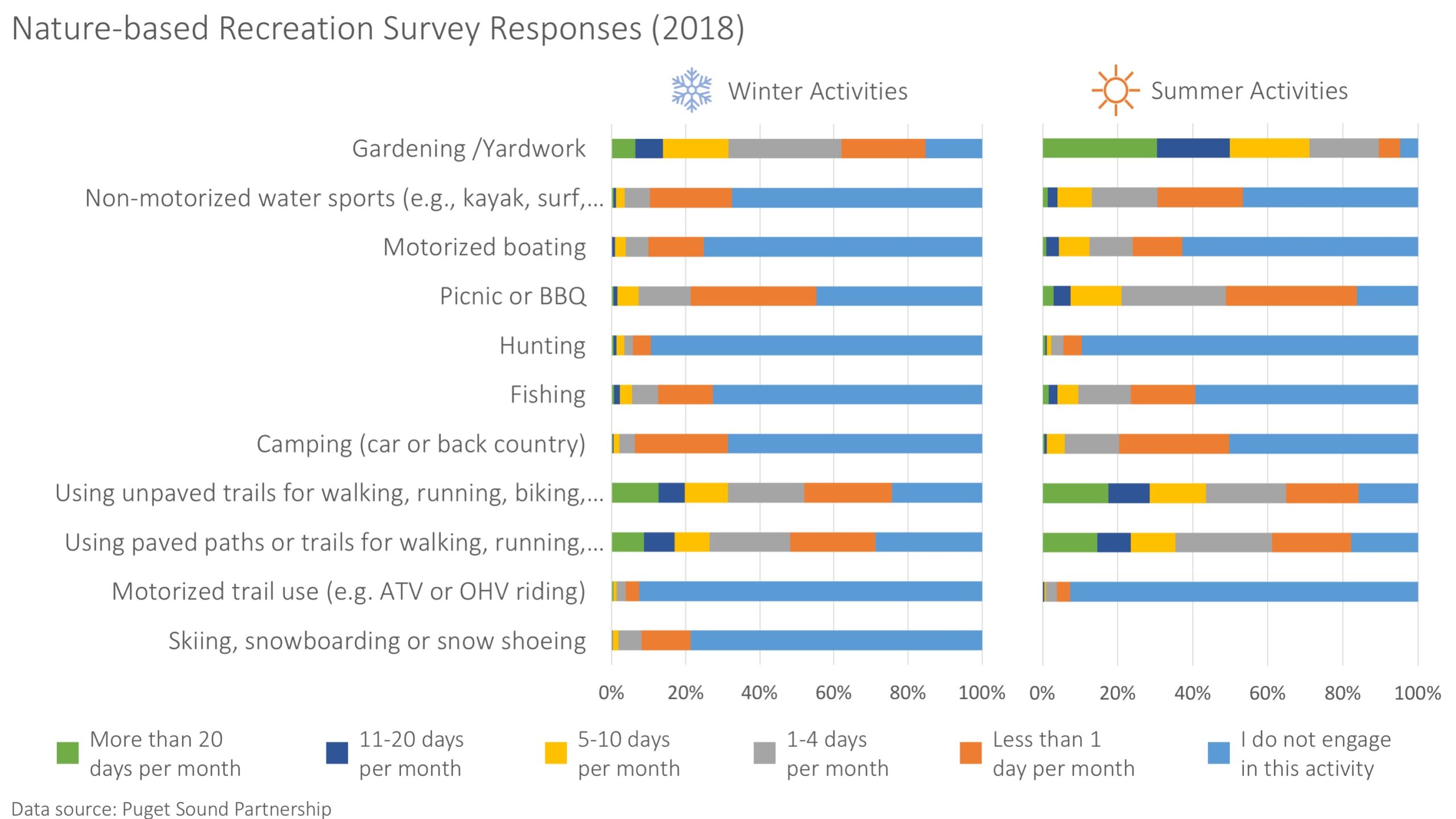The mission of the Integrated Watershed Plan (IWP) is to achieve a healthy Hood Canal that benefits people now and in future generations. The current focus areas integrate the ecological and social aspects of our region, including: forests, forestry, shellfish, commercial shellfishing, salmon, and human wellbeing.
Human Wellbeing
People benefit from a healthy Hood Canal environment
We have always known that the Hood Canal natural environment contributes to our wellbeing. It is why we want to live and vacation here. Those values inform the way we manage natural resources.
Healthy ecosystems benefit people in many ways, providing clean water, food, recreation, and they have cultural, spiritual and psychological significance. Natural resources are also a significant contributor to the local economy. We measure human wellbeing in Hood Canal to capture local values and help ensure they are honored. Monitoring human wellbeing will inform and help us evaluate watershed strategies for social and ecological benefits.
Social scientists generally define human wellbeing by six different aspects or domains:
- psychological
- physical health
- social health
- cultural health
- governance
- economic
The Integrated Watershed Plan has adopted those, as well as specific indicators for each. When we combine the results of our assessment of human wellbeing indicators with our assessment of environmental indicators, we get a snapshot of the overall social-ecological health of Hood Canal.
The indicators are not meant to comprehensively capture all aspects of human wellbeing and the environment. They were selected using a participatory process involving Hood Canal residents and natural resource professionals. The indicators and methods will be refined and expanded in the future. Learn more about how human wellbeing indicators were selected in Hood Canal.
Our first human wellbeing survey was conducted in 2014 using Google Consumer Surveys, an internet-based survey instrument. Respondents were identified in all of the Hood Canal zip codes, and were further screened to target only respondents who live full-time, part-time, or own property in Hood Canal. Results were weighted based on demographic data from the 2010 US Census and 2012 5-Year American Community Survey. Learn more about our survey methods and results in the Measuring Human Wellbeing Indicators for Hood Canal report.
Since then, the Puget Sound Partnership adopted Human Wellbeing Vital Signs and indicators, and have developed a monitoring program led by Oregon State University’s Human Dimensions Lab. The biannual Puget Sound Human Wellbeing Survey now provides the data for HCCC’s human wellbeing indicators. View 2022 summary report.
We are managing our Hood Canal home and its resources to ensure its health and vitality into the future
Indicators
Sense of Place
TARGET: Hood Canal residents and visitors feel positive emotions from their experiences in the natural environment.
On average, Hood Canal residents regularly experience wellbeing outdoors, agree that Hood Canal contributes to their sense of place, and are somewhat satisfied with life overall.
The Hood Canal community is strongly connected to the natural environment
People often have a connection to a specific place within Hood Canal, from a favorite hike or lookout for reflection, to a secret harvesting site or beach for family gatherings, or the nearby beach or trail where they like to walk. Many also experience positive feelings associated with the area in general. These feeling contribute to a sense of identity and satisfaction associated with the place itself.
This indicator summarizes three specific metrics: Sense of Place Index, Psychological Wellbeing, and Life Satisfaction.
These metrics capture the feelings and emotions from being in, or experiencing, nature in Hood Canal, such as: awe, inspiration, fulfillment, place-attachment, appreciation, pride, relaxation, satisfaction, identity, sense of peace, and stress-reduction.
Learn more about sense of place indicators and how the data are gathered on the Puget Sound Partnership’s Action Agenda Vital Sign website and Puget Sound Info.
Ecosystem Connections
Good Governance Index
TARGET: Hood Canal residents and visitors know where to access information on natural resources issues and trust those sources.
Hood Canal residents’ satisfaction of the area’s environmental governance is split evenly, with an average response of “Neutral.”
Hood Canal community is engaged in environmental governance
Good communication and understanding of natural resource issues requires information available from a trusted source.
This indicator monitors either characteristics of how Hood Canal residents interact with their government on natural resource issues and topics, addressing more than just the basic functions of government, but the formal and informal processes of decision-making and policy implementation.
Learn more about the Governance indicator and how the data are gathered on the Puget Sound Partnership’s Action Agenda Vital Sign website and Puget Sound Info.
Ecosystem Connections
Participation in Cultural Practices
TARGET: Hood Canal residents are able to frequently participate in cultural and traditional practices
On average, Hood Canal residents participate in cultural and traditional practices every few months, and nearly 75% do so at least quarterly.*
Cultural practices are important to the Hood Canal community
Hood Canal residents participate in many cultural practices and traditions related to the environment, including: harvesting (fishing, crabbing, and shrimping, clam digging and clam bakes, hunting, mushroom and plant gathering, and carving), as well as recreation, pow wows, outdoor family gatherings, swimming, gardening, hiking, celebrations and events, observing wildlife and nature, and many more.
Respondents were asked to evaluate their participation in the following question: In the past year, about how often did you participate in activities or traditions related to the environment that are important to your family or community? The mean response for this indicator will be irrelevant with the next round of surveys, as it will be shifting from a frequency response option to a meaningfulness response option (some activities are meaningful, but only practiced once a year).
Learn more about the Cultural Practices indicator and how the data are gathered on the Puget Sound Partnership’s Action Agenda Vital Sign website and Puget Sound Info.
*Note: New indicator; data is not comparable to previous Hood Canal human wellbeing survey results.
Ecosystem Connections
Engagement in Stewardship Activities
TARGET: Hood Canal residents and visitors feel connected to their communities through natural resource activities.
Hood Canal residents engage in stewardship activities an average of more than once a month while 50% participate at least once a week. Sound Behavior Index scores have also increased steadily across Hood Canal counties.
Stewardship connects Hood Canal Communities
Hood Canal communities are connected and strengthened by natural resource harvesting and management. These activities capture the element of trust, since trust is both necessary for community collaboration and is built by working together.
This indicator measures the frequency of Hood Canal residents’ participation in the following stewardship behaviors:
- Environmental behaviors that you believe are needed by the community
- Environmental behaviors that were personally meaningful to you
- Behaviors that you believe effectively benefitted the environment
The Sound Behavior Index also measures day-to-day stewardship behaviors of Puget Sound residents.
Learn more about the Stewardship indicator and how the data are gathered on the Puget Sound Partnership’s Action Agenda Vital Sign website and Puget Sound Info.
Ecosystem Connections
Natural Resource Industry Employment
TARGET: Hood Canal natural resource industries significantly contribute to local communities.
Data is incomplete and/or showing mixed results. Tourism and recreation industry employment are steady or increasing in Hood Canal counties. Additional data analysis is needed.
Natural resources provide an important source of employment for Hood Canal communities
Natural resource industries are a major contributor to the overall Hood Canal economy and provide jobs to local residents.
This indicator captures the major resource-based industries, ranging from small and family businesses to large corporations and measures the percent of revenue to Hood Canal economies from agriculture, commercial shellfish, commercial fishing, timber, non-timber products and tourism.
Learn more about the Natural Resource Industry indicator and how the data are gathered on the Puget Sound Partnership’s Action Agenda Vital Sign website and Puget Sound Info.
Ecosystem Connections
Each natural resource industry has experienced economic fluctuations, evident even in the past five years. Forestry is steady or increasing in Kitsap and Mason counties, and fishing, hunting, and trapping remain steady across the counties. Agriculture demonstrates dramatic changes from year-to-year as markets and seasonal changes have a large impact. Click on additional graphs for more Hood Canal farm trends.
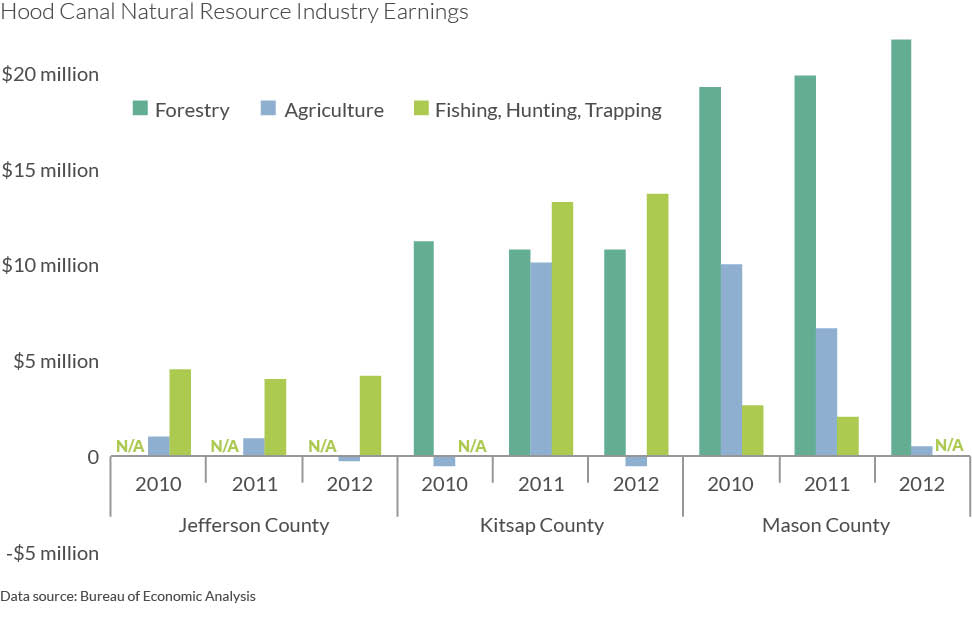
Tourism makes a large contribution to the Hood Canal economy. Just as economies have changed across WA state and the U.S., we have seen traditional natural resource industries fluctuating with the tides of supply and demand, and tourism steadily gaining, as recreational opportunities become more available and more well-known.

Hood Canal farm trends show a changing agriculture landscape in the region. As the overall number of farms has increased, farm size has simultaneously decreased. Throughout this time, total land in farms showed a significant decline starting in the 1970’s and lasting into the 1990’s, but dramatically increased in the late ‘90’s, and has remained steady.
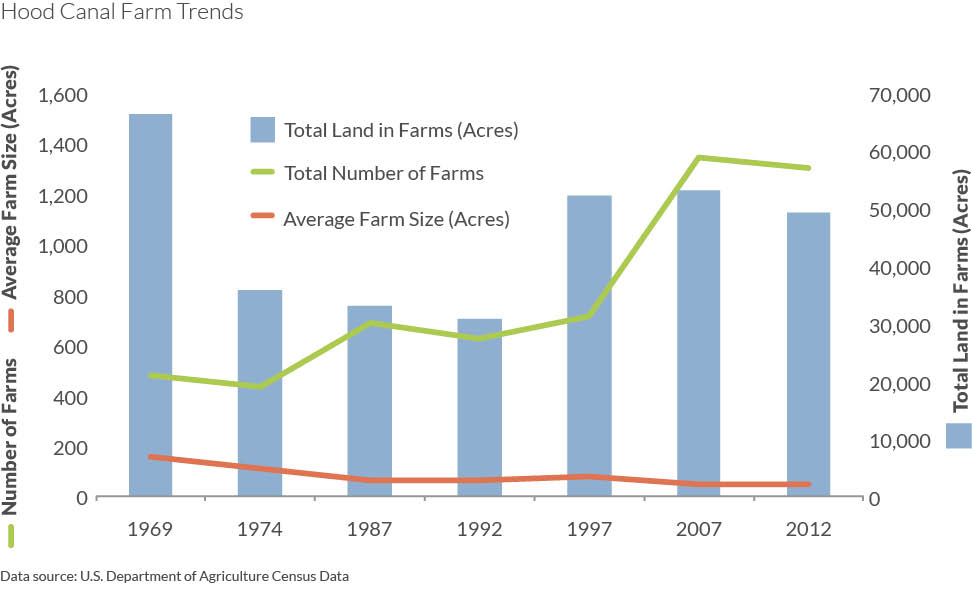
The market value of Hood Canal farm products has fluctuated over the years with changes in farming practices, market demand, and land use. Livestock dominates Hood Canal farming activities; although Kitsap County crop production has increased over the past twenty years, with a sharp decline in livestock. All three counties saw a significant increase in market value starting in the nineties, when Mason County in particular has dramatically increased its livestock production.
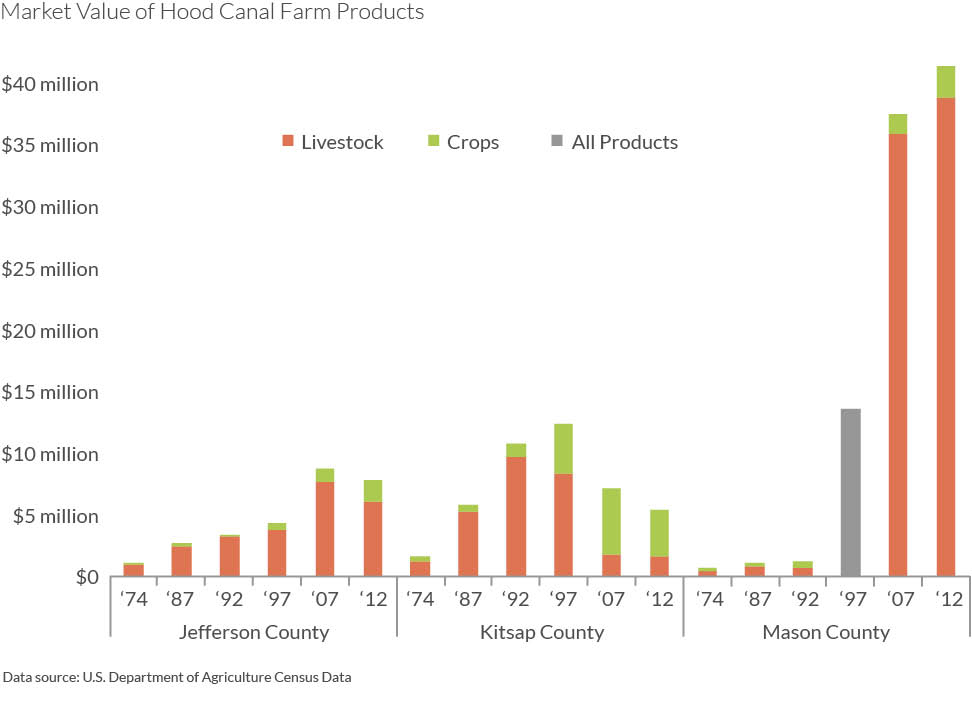
Hood Canal prides itself on its local shellfish. The industry is present in all three counties, and includes active tribal shellfish operators, contributing revenue and employment to Hood Canal residents. The majority of Hood Canal’s shellfish production occurs in the south, in Mason County.
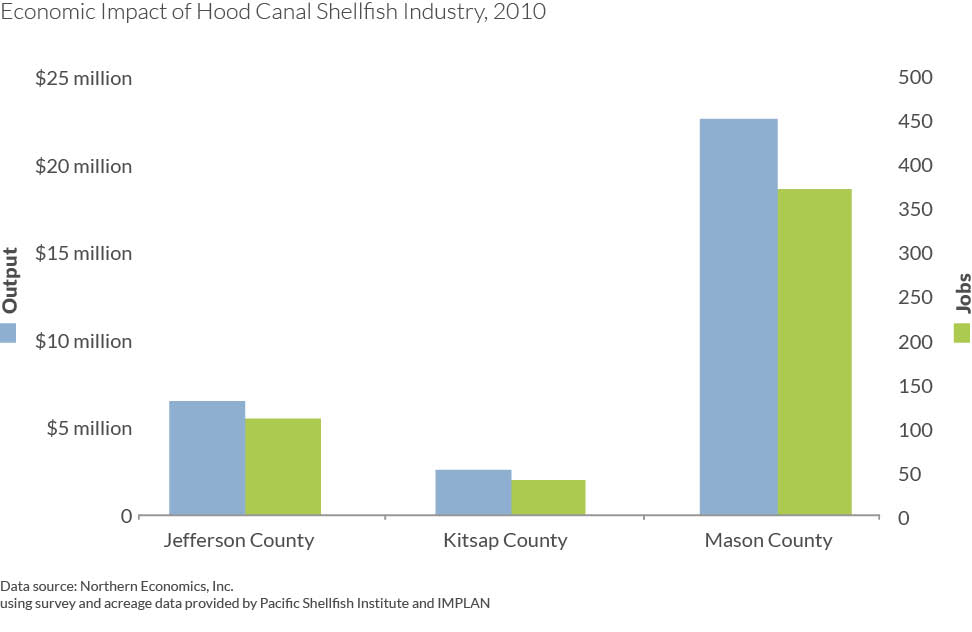
Locally Harvestable Foods Index
TARGET: Hood Canal residents are sufficiently able to harvest local, wild foods.
On average, Hood Canal residents hunt, forage, or collect local foods nearly 1-2 times a season.*
Hood Canal supplies the community with locally harvested foods
Access to local wild food is important for cultural and physical health as subsistence and supplemental diets typically have high nutritional value, and harvesting requires physical activity in the outdoors. Food harvesting also maintains cultural traditions, measured by the Participation in Cultural Practices indicator.
This indicator measures the frequency that Hood Canal residents harvest common species (e.g. shellfish, deer or elk, fish, waterfowl, mushrooms, plants, or berries).
Learn more about the Local Foods indicator and how the data are gathered on the Puget Sound Partnership’s Action Agenda Vital Sign website and Puget Sound Info.
* Note: New indicator; data is not comparable to previous Hood Canal human wellbeing survey results.
Ecosystem Connections
Nature-based Recreation
TARGET: Hood Canal residents actively utilize the outdoors for recreation
Two-thirds of Hood Canal residents participate in low intensity summer recreation activities at least monthly, while nearly half do so at least five times a month.*
The outdoors are an important component of life in Hood Canal
Outdoor recreation is an important component of the Hood Canal community. It is a primary driver of the regional economy and provides many reasons for why people choose to live here and visit the area. Recreation takes many forms in Hood Canal, from low intensity activities, such as gardening and yard work or walking on paths and trails, medium intensity activities, such as camping, fishing, or kayaking, and high-intensity activities, such as motorized sports or hunting.
Learn more about the Nature-based Recreation indicator and how the data are gathered on the Puget Sound Partnership’s Action Agenda Vital Sign website and Puget Sound Info.
*Note: New indicator; data is not comparable to previous Hood Canal human wellbeing survey results.
